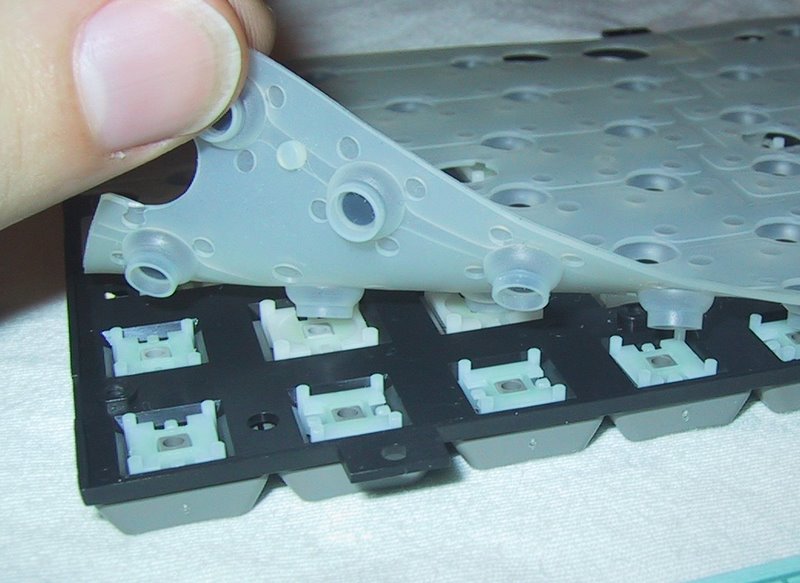Membrane Switches: A Crucial Component in Bespoke Control Panels
Membrane Layer Switch Innovation: The Trick to Reliable and Cost-Effective Interfaces
Membrane layer button technology has actually emerged as an essential component in the design of customer interfaces, providing both dependability and cost-effectiveness across a varied range of applications. As we explore the complex advantages of membrane layer buttons, their possibility for innovation elevates questions about future applications and evolving fads.
Understanding Membrane Layer Change Technology
Membrane layer switch modern technology is a widely made use of user interface solution in different digital devices, supplying a seamless blend of functionality and style. This technology incorporates numerous layers of materials, normally containing a visuals overlay, spacer layer, and a circuit layer. The visuals overlay displays the user interface aspects, while the spacer layer separates the circuit layer from the overlay up until a user turns on a switch.
When pressure is applied to the overlay, the circuit layer finishes the electrical circuit, sending out a signal to the gadget. This mechanism enables numerous configurations, including tactile responses and backlighting options, boosting user communication. Membrane layer buttons are usually made using durable materials such as polyester or polycarbonate, ensuring long life and resistance to environmental elements like wetness and dust.
The adaptability of membrane layer changes allows their application in varied industries, including clinical devices, consumer electronics, and industrial controls. Their small design enables integration into space-constrained atmospheres, offering an effective interface without endangering aesthetic charm. Comprehending the intricacies of membrane button modern technology is vital for suppliers and developers seeking to develop reliable and efficient human-machine user interfaces.
Trick Advantages of Membrane Buttons
While numerous user interface solutions exist, membrane switches offer distinct advantages that make them a preferred choice in many applications. Among the main advantages is their durability; membrane layer buttons are developed to hold up against extreme environmental problems, including dampness, dust, and temperature variations, guaranteeing durable efficiency. This resilience considerably minimizes the need for constant substitutes, thereby decreasing general upkeep prices.

Furthermore, membrane buttons are lightweight and portable, making them ideal for applications where space is limited. Their inconspicuous design adds to a streamlined appearance without endangering capability.
Cost-effectiveness is also a remarkable advantage, as the manufacturing process for membrane layer switches over often tends to be cheaper contrasted to conventional mechanical switches. This cost, incorporated with their reliability and convenience of installment, settings membrane changes as a useful solution for a large variety of markets looking for efficient and reliable interface.
Applications Throughout Numerous Industries
Exactly how do membrane layer buttons adjust to the varied requirements of numerous industries? Membrane switch modern technology is increasingly identified for its adaptability, making it suitable for a broad variety of applications across several sectors.
In customer electronics, membrane switches give a small remedy for remotes and home appliances, boosting user experience with instinctive style. Additionally, the industrial market leverages membrane switches for machinery control board, profiting from their resistance to extreme atmospheres, such as dampness and dust.
Army have a peek at this website and aerospace applications also make use of membrane buttons for their integrity and ability to endure severe problems, ensuring operational effectiveness in vital click to find out more scenarios. The food and beverage market adopts these switches for automated systems, where cleanliness and ease of operation are extremely important (membrane switch). Ultimately, membrane switches are tailored to satisfy the one-of-a-kind needs of each industry, proving their necessary duty in modern-day innovation user interfaces
Design and Customization Options

In the world of membrane layer button modern technology, style and personalization choices play a critical function in enhancing functionality and individual communication. These switches can be tailored to satisfy details functional needs and visual preferences, making them flexible components in numerous applications.
Among the primary modification choices is the layout of the button itself, which can be designed to accommodate unique interface and ergonomic factors to consider. By adjusting the form, dimension, and setup of switches, makers can produce user-friendly designs that promote simplicity of usage. Additionally, the consolidation of different colors and visuals overlays permits for branding and improved exposure, making sure that individuals can rapidly identify features.
In addition, membrane layer switches can be engineered with numerous responsive feedback systems, such as raised switches or audible clicks, to boost the user experience. Various materials can additionally review be selected for toughness and ecological resistance, attending to factors such as moisture, temperature level variations, and chemical exposure.
Eventually, the substantial layout and modification alternatives available in membrane button modern technology equip services to develop tailored remedies that not just meet functional demands but additionally straighten with their branding and functional requirements.

Future Trends in Membrane Buttons
As membrane layer switch technology remains to progress, future trends are increasingly concentrated on improving user experience and incorporating sophisticated performances. One significant trend is the assimilation of touch-sensitive and capacitive modern technologies right into standard membrane layer switches. This advancement allows for even more user-friendly individual interfaces, giving tactile comments while preserving a smooth layout.
An additional arising trend is making use of eco-friendly materials, driven by the growing demand for lasting manufacturing practices. Producers are looking for to minimize their carbon impact by utilizing recyclable substratums and low-impact inks, straightening with international sustainability objectives.
Additionally, the rise of the Web of Points (IoT) is motivating the unification of wise functions into membrane layer switches. Improved connection options will make it possible for gadgets to communicate with each various other, enabling for seamless integration right into broader systems.
Additionally, advancements in printing technologies, such as electronic printing, are enabling higher layout flexibility and customization. This enables producers to generate complex designs and dynamic colors cost-effectively.

Verdict
In final thought, membrane layer button modern technology stands for a vital innovation in user interface design, offering substantial benefits in longevity, customization, and cost-effectiveness. As developments proceed to emerge, specifically in touch-sensitive interfaces and lasting materials, the capacity for membrane layer changes to improve user experience and functionality continues to be encouraging.